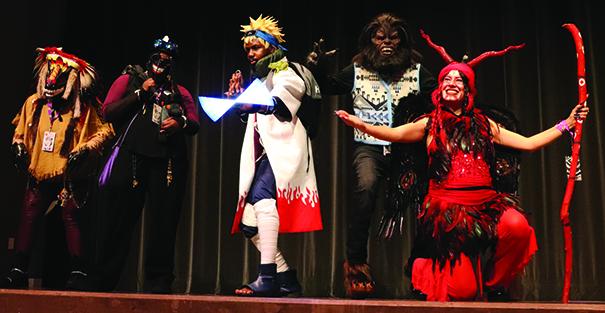
By Kalvin Valdillez, Tulalip News
Once upon a time in the 80’s, a giant wearing a sailor’s cap terrorized the streets of New York while wearing a bright smile on his face. In the classic 1984 Ghostbusters scene, people are seen abandoning their cars and running away from his path of destruction. 40 years later, the sight of the Stay Puft Marshmallow Man caused nothing but excitement as hundreds rushed toward the 30ft inflatable monster throughout the weekend of April 12, for their first photo-op at the 2024 IndigiPopX conference.
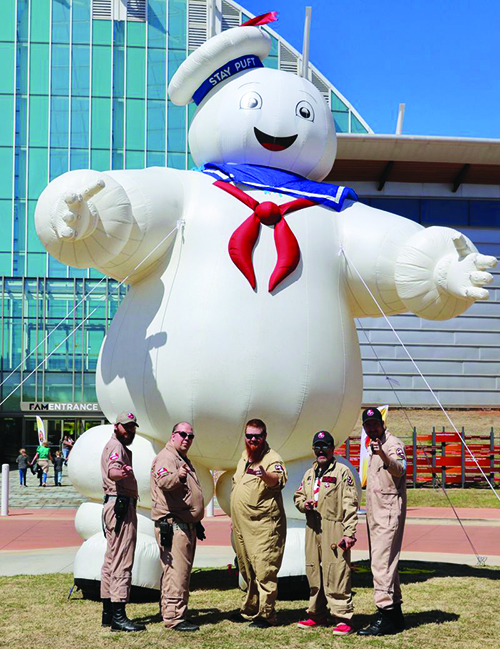
Now, that’s something you don’t see every day, but luckily for Indiginerds across the nation, this event does happen once a year. Back in 2016, this gathering of comic book and Indigenous pop culture fans made its debut in Albuquerque, New Mexico. Since then, it has grown and has become a space for Natives, in all creative mediums, to share in each other’s love for the geek culture and fandom.
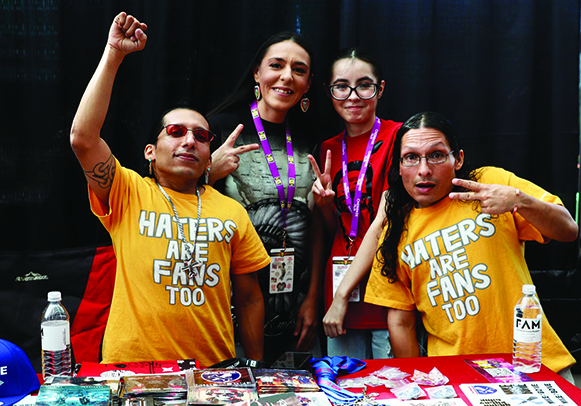
Formally known as Indigenous Comicon (ICON), the 3-day festival officially became IndigiPopX in 2019. Shortly after, the event found a permanent home at the First Americans Museum, in Oklahoma City, which features a large convention area with two theaters and plenty of space to host multiple workshops, panels, and live demonstrations throughout the weekend.
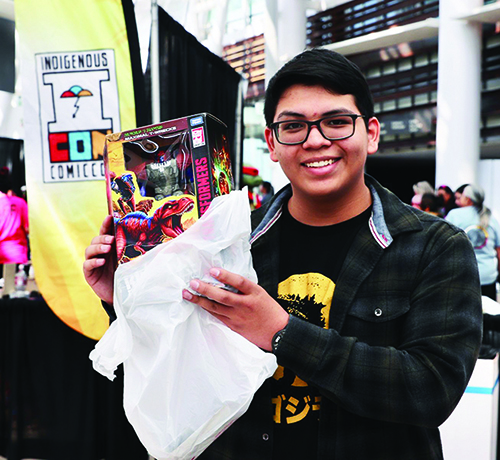
What makes IndigiPopX more exciting is they bring in accomplished creatives to share the tricks of their trade to help empower and inspire young and upcoming artists, writers, musicians, actors, social media influencers, and more. This year’s special guests included writers such as Shane Hawk, Johnnie Jae, Jim Terry, and F. Anthony Falcon. As well as several cast members from both Reservation Dogs and Echo.
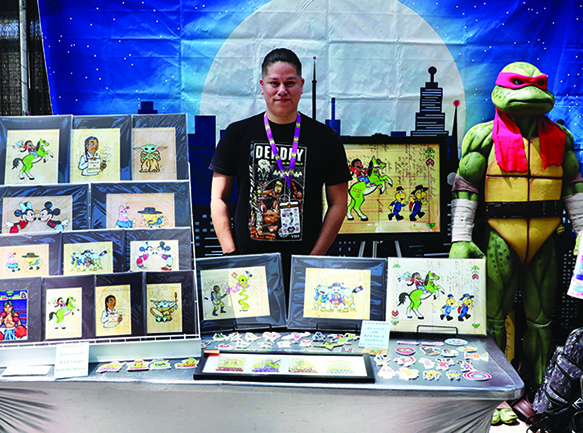
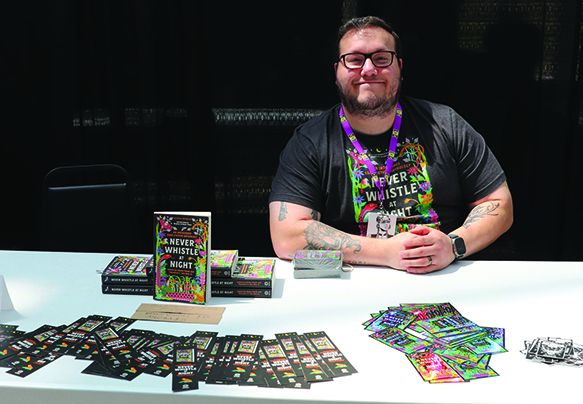
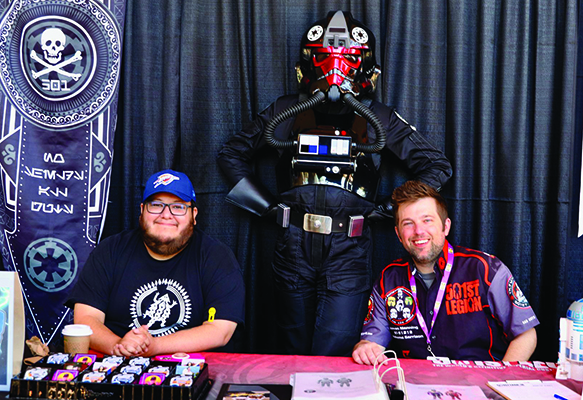
Author and Comic Book Writer, F. Anthony Falcon, shared his secret 5-step formula for writing fiction. With a packed classroom, he had each person in attendance write a summary of their very own story starting with 1. The protagonist 2. The antagonist 3. Their supporting characters 4. The journey and 5. A strong entity to open or close. By the end of the class, each writer had carved out a detailed idea for a story, and many were impressed to see their wildest imaginations come to life on paper.
Said Falcon, “To take part in this event and be able to share, it makes my heart happy. It makes me proud to know that I’m doing my little part to ensure that stories are being told and that our people feel valued. And it’s important that people understand – don’t let your voice go unnoticed, you’re special, you’re strong, and you do have it in you. If you want to be a writer, and you have a story to tell, by all means tell it. The goal of every Indigenous writer should be to elevate where they come from and their people, because that’s what you’re supposed to do. Don’t be afraid. Put that pen to paper or do it on your computer. Even if you’re only writing a couple sentences a night, you’re making progress and just know you’re valued, you’re important and your stories need to be heard.”
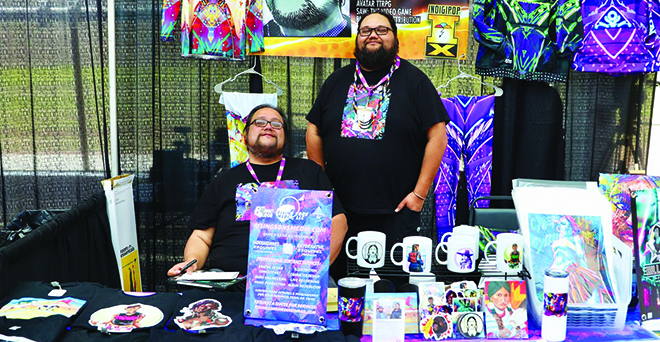
Also in attendance was an independent multi-media company that is making soundwaves here in the Pacific Northwest. Rising Sons Media, based out of Seattle, was started by the Esquivel brothers, Sade and Deyo (Kanien’keha:ke), who specialize in illustration, beadwork, and music production. Both Sade and Deyo hosted workshops throughout the weekend; Sade shared about his work that has been featured in video games and comic books, and Deyo hosted an interactive music production demonstration where he made a beat with those in attendance of his class. Through Rising Sons Media, Deyo has collaborated with other Native artists throughout our region. And recently, he produced and released an album by Tacoma Indigenous songstress, Akaya the Alien.
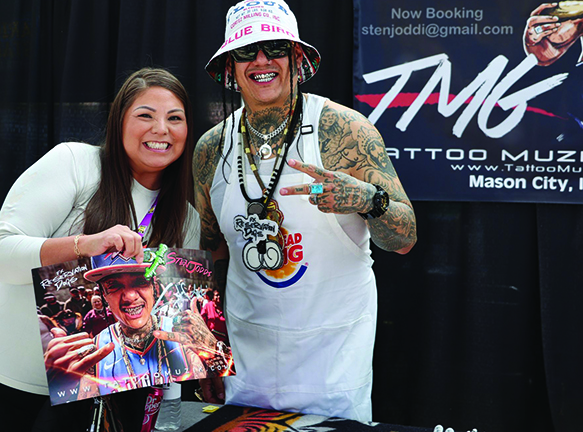
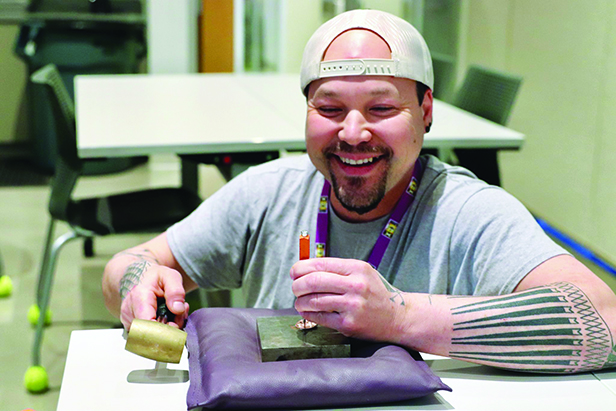
Following the workshop, Deyo shared, “One great thing about IndigiPopX is that we have so many Native people doing all these different things in art, music, film, VR, AI stuff, robotics. That’s a great thing to show the youth, all the different things that we can do and the different avenues that are there for us to be creative, and to tell our own stories – our cultural stories, our history, and our future. It’s not just about the past, the traditional ways the traditional songs, it’s about where do we go from here? How do we as modern people identify what is cultural for ourselves and for our future generations? And so that’s what I love about being here at IPX and teaching classes to the youth. Just to show that this is what you can do. You can do the art that you want, and it is Indigenous. Even if it’s hip-hop or it’s country, it’s Indigenous because it comes from you.”
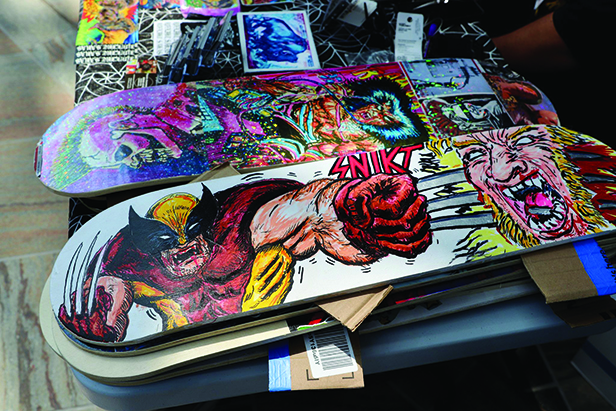
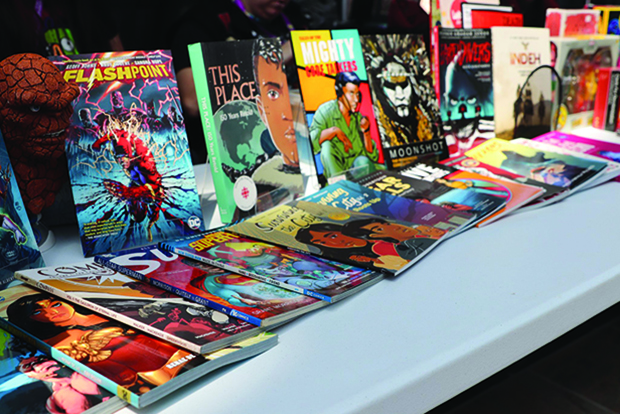
A major highlight for IndigiPopX goers is checking out all the artwork, clothing, jewelry, board games, stickers, and books that are on sale. What makes this special is the people get the chance to chat with the various creators and vendors, and more often than not, they leave with an autograph in addition to their purchase.
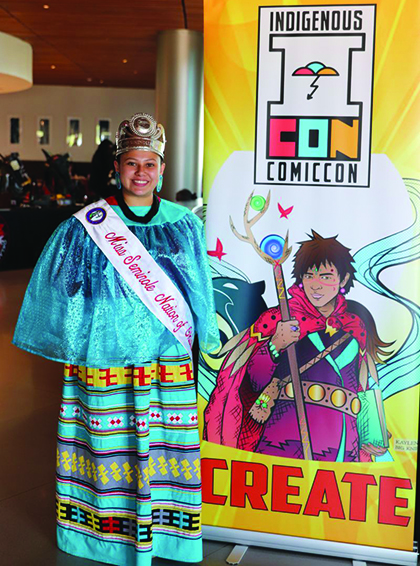
Comic book writer and First Nations artist, Alina Pete, made the trip to OKC from Vancouver, B.C. Amongst her jewelry and amazing Pokémon art prints, Alina had a number of her own comic books for sale. During the IndigiPopX weekend, the Native comic book community lost one of the founders of the Indiginerd culture, Jeffrey Veregge, who was known for bringing Coast Salish formline to the masses through his work with Marvel. While taking a moment to reflect on Jeffrey’s impact to the Native geek world, Alina shared that her book actually contains one of his last stories, By the light of the Moon.
“The main thing that I’m here promoting is my book, Woman in the Woods and other North American stories, which is a comic anthology by Iron Circus Comics,” said Alina. “It’s got a variety of stories in it from different Native groups around the USA and Canada. One of the stories in here is by an Indigenous comic artist we just lost this weekend, Jeffrey Veregge. He wrote it and he was slated to illustrate it, and he got sick during the course of it. So, his partner actually had to go onto his computer and find the script so that we could try and find someone to draw it and get it in the book, because we really wanted to include it in the book. And this was before – we didn’t know how serious it was yet. We thought he’ll recover, we’ll get his story in there, and he’ll go on to make so many more things. And it ended up being, I think, the last thing he worked on. I hope we made him proud.”
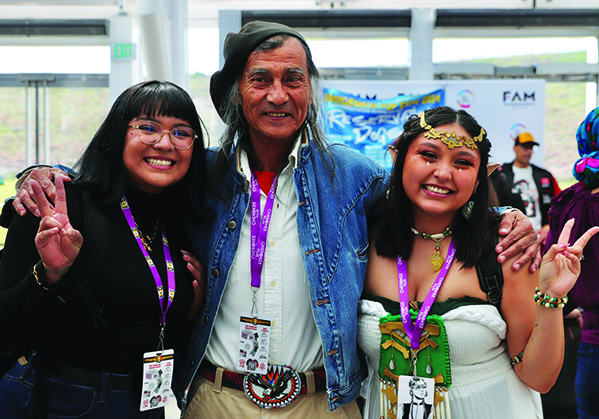
She continued, “I was just talking with a bunch of other friends who are also Indigenous comic artists who are here at the event. And we were saying how, most the time, when we were at comic book shows, we feel like we’re the only ones in the building. And so, we kind of have to explain what is Indigenous comics, and why are you doing it, and why is it important as an Indigenous person to do comics? And here, everyone just gets it. Everyone is like, yes, of course, Indigenous representation is really important. And that’s why we’re here, we just feel really loved and supported being here. But also, everyone gets what we’re trying to do, and why it’s so important to see yourself represented on the page of a comic book.”
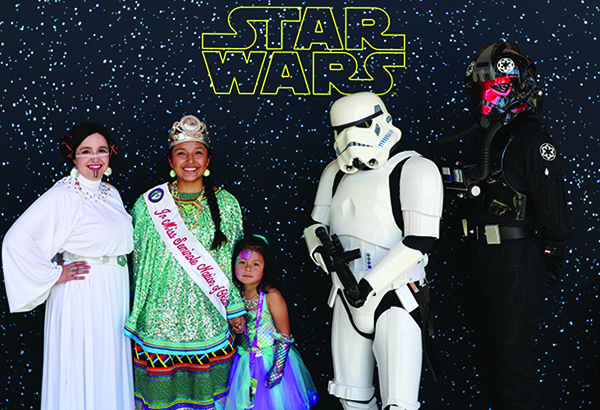
After a fun and geeked out weekend, IndigiPopX 2024 closed out with a cosplay contest in which nearly 30 participants showcased their tailoring skills on costumes that ranged in characters from Star Wars all the way to a Werewolf tribal chairman. Immediately after the contest winners were awarded their prizes, the cosplayers lined up for a parade around the First Americans Museum, before everyone said their goodbyes til next years conference.
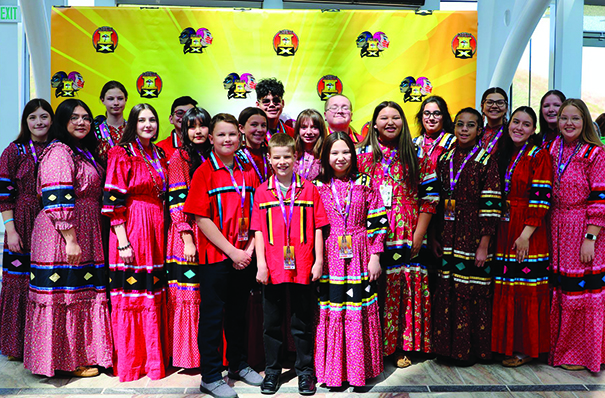
Indigenous artist and Cosplayer, Adam Youngbear, expressed, “I think it’s really awesome, just to have the opportunity to share my art, share my culture, but also see everybody else’s coming in, see the folks that are from up north or out west. So, I really think it’s awesome to get a blend of all the Native nerds together. I participated in the costume contest; I was a tribal council-wolfman. Last year, I was a Native ninja turtle and I got second place. My daughter won; she beat me last year. But it’s always fun to put a costume on and put a Native spin on it. It’s important to see that Native representation. We’re not only looking at movies and shows anymore, but we’re also seeing us in comics and gaming out. It’s really awesome to see that, the little kid in us is loving every second of it.”